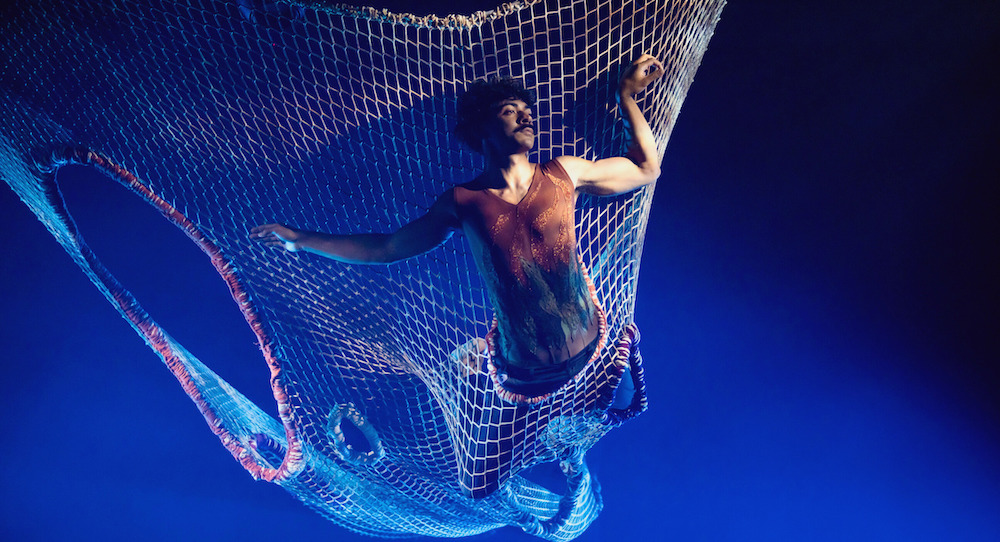The Studio Theatre at Bangarra, Sydney.
10 February 2023.
We are welcomed to the performance of Bangarra Dance Theatre’s Dance Clan by a film clip of Frances Rings explaining the history of Dance Clan and Bangarra, and the mentoring and development for this programme. Each of the three works is introduced by the choreographer, putting their work into context, and we see rehearsal footage. The choreographic style was perhaps a bit different from the ‘usual’ Bangarra feel, but yes, there were definite links to continuing the storytelling and the major connection to the land and Country in each, the three works intrinsically embedded in the vision and integrity of the choreographers.
There are three short works, in all of which recorded music is used and the dancers are barefoot and with a sense of being grounded. The first is Kulka by Sani Townson, respectfully acknowledging his grandfather and legacy as Lagaw Mabaygal (Island People) and divided into three sections. The work begins with a female dancer in a sinuous, rippling blue dress with gold detail, curled and lifted high by five other dancers then, floating, settled safely. The second component is inspired by the title of the piece, Kulka (meaning bloodline and kinship, the passing on of stories and culture). Karen Norris’ lighting then highlights five dancers in consecutive, assertive movements, leading to a bellicose dance, and Amy Flannery’s music formulating a concentrated sharpness. Townson’s choreography includes rippling arms, revolving turns, striking, difficult lifts and backward jumps, as well as some slithery floorwork. Strobe lighting is included as well as a pulsating, flashing use of a red light.
Electronic music is continued in Ryan Pearson’s 5 Minute Call. Introducing his work, Pearson recalls his feeling of guileless joy dancing with his sisters as a child. He also then attempts to express the elation he found when older on the queer club dance floor. All six dancers wear black semi-transparent tops and white trousers, and there is much made at times of oversized white jackets (as designed by Claire Parker). A flickering light starts (lighting by Karen Norris) with the pulsating music, revealing a neon lit circular table that is the major feature of the set. The dancers writhe and bop. A screen at the back is used to show a map of Pearson’s Country. The demanding movement is creamily luscious, yet also includes slippery, slithery floorwork almost like breakdancing. Vigorous flying leaps, swooping arms, spectacular jumps and sculptural group writhing are also integrated in this exciting work.
The most visually arresting work was the last, Keeping Grounded by Glory Tuohy-Daniell. The context is health, energy and being grounded – being able to touch the Earth with your bare feet not breaking the connection by wearing shoes. A duet of dodging and dipping comes toward the start of the work, then other dancers arrive, pounding and strutting, elbows protruding, hands on hips. The set by Shana O’Brien is a huge long net with scattered stitched holes (delineating the sole of a shoe, and perhaps a fishing net). Karen Norris’ lighting is again splendid. The net functions as the basis for fabulous visual and choreographic effects, the dancers employing aerial acrobatics to resemble the placing of a shoe on land. Collared shirts are suspended in the holes of the net and utilised like aerialist straps. The net, startlingly creeping forward at first, is raised and a dancer is entangled, attempting to reach the Earth through each of the holes, also suggesting being alone and caught. Brendan Boney’s score increases the intensity of the atmosphere.
Bangarra’s Dance Clan is an exciting, thought-provoking programme.
By Lynne Lancaster of Dance Informa.

















